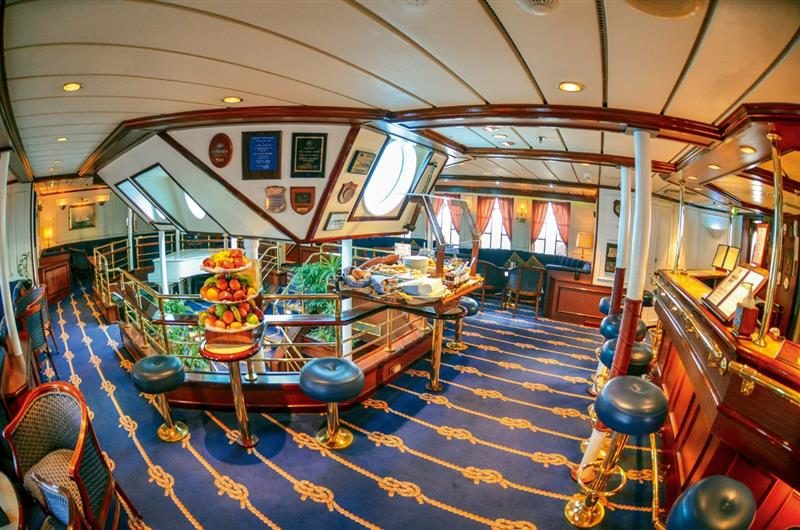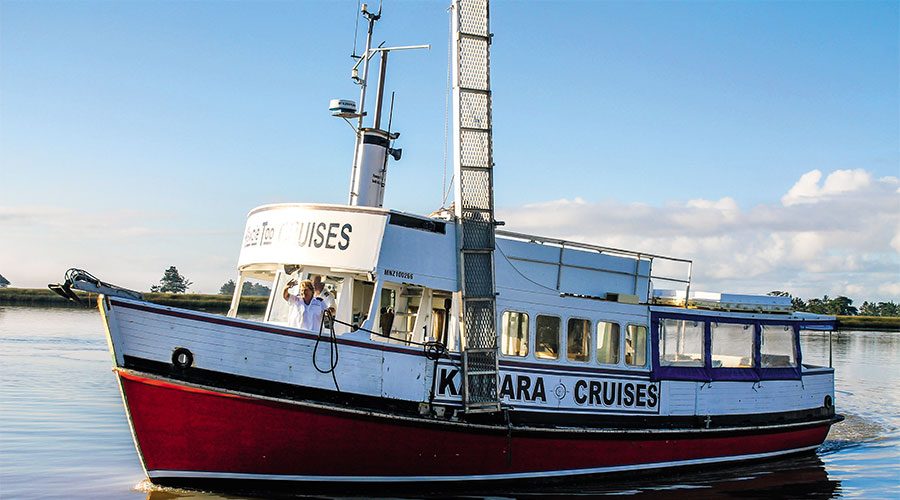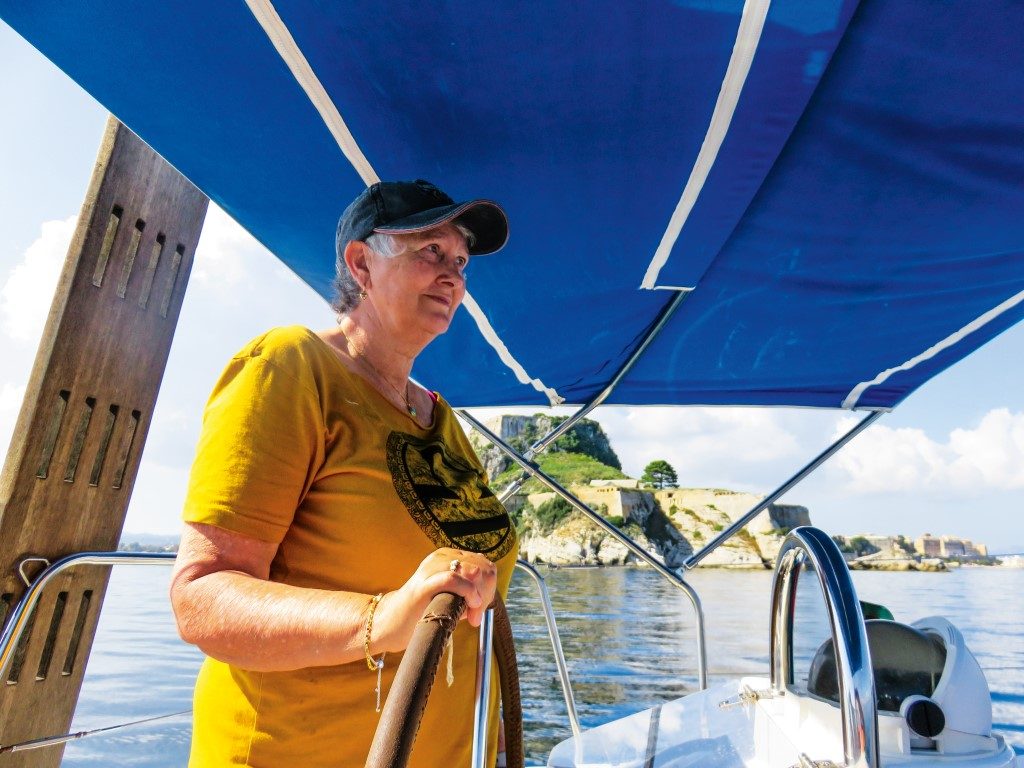

Nothing stirs the soul in quite the same way as a tall ship under full sail at dawn, her labyrinthine rigging silhouetted against the rising sun. And when sumptuous accommodation, fine dining, pristine beaches and plenty of history are added to the mix, you have a recipe for out-of-the-ordinary cruising. Lawrence Schaffler joined ‘Star Clipper’.
Star Clipper is a 115m four-masted barquentine – a cruise ship operating in the tropical waters around Thailand, Malaysia, Indonesia and Singapore. Launched in 1992, her design and rigging are faithful to those of the legendary clippers that plied these waters more than a century ago.
Her four masts carry 16 sails with a total area of 3,365m2 – many with odd names such as fisherman, topgallant and spanker. The expansive teak decks are riddled with archaic
features – fife rails, belaying pins and large wooden turning blocks – you’ll even find a pair of pelorus compasses mounted either side of the bridge.

But while the sense of tradition is tangible, it comes with a twist: she’s also a luxurious cruiser, catering for up to 170 guests in splendid, heritage-themed accommodation. Mahogany brightwork abounds down below, offset by gleaming brass and navy carpeting. She might hark back to a bygone era, but this is a very modern, graceful lady.
I joined her in Phuket, Thailand for a week-long cruise to Singapore (about 800nm), taking in some of the region’s most remote (and picture-perfect) beaches before heading south to
Penang in Malaysia, through the infamous Straits of Malacca and on to Singapore. A fascinating voyage in the wake of the tall ships that bustled around these parts in the mid-1800s.

So – she’s a somewhat unusual cruise ship. But it’s the size of the passenger complement that provides her point of difference. With only 170 guests things are cosy and friendly – the ice thaws quickly. It’s also very multinational – mostly Europeans, but also Americans, Canadians and Australians.
And their response to my probing questions was always the same: “We love cruising, but not on vessels with 3,000–4,000 passengers. We prefer the intimacy this ship offers, it’s like being part of a family. Getting to know everyone is uncomplicated. And of course, sailing on a tall ship is very romantic.”
My ‘aural’ test corroborated these sentiments – by dinner on day three the volume of conversation and laughter had climbed considerably. I also discovered that many of the guests were on ‘repeat’ voyages – second and third time around. One German couple were celebrating their 10th Star Clipper voyage – “it is wunderbar, ja?” Indeed, it is.
CLIPPER CRUISING
Star Clipper is one of three tall ships in a fleet operated by Swedish company Star Clippers. Her sisters are Star Flyer (identical) sailing around the Med and the Caribbean, and the bigger Royal Clipper, a 134m five-master that similarly alternates between the Caribbean and the Med. Between them they offer a vast range of cruises and destinations – seven to
22 days in duration. A fourth vessel is being built. Clearly, the Clipper cruising recipe works.
The cruising style is best described as informal elegance – a very friendly, laid-back environment where you can do as much – or as little – as you like. And if you’re nervous about the motion of a medium-sized sailing ship – don’t be. She’s very stable – there’s little danger of spilling your pina colada. But there is a real possibility you’ll leave the ship a few kilos heavier than when you boarded.

It’s hedonist heaven – where gourmet meals glide seamlessly into one another. Breakfast morphs into mid-morning tea with snacks, a buffet lunch, afternoon treats, sundowners and then dinner – all immaculately presented. My thoughts did extend to the team of chefs toiling in the steaming galley deep within the ship. At the equator the ambient temperature hovers around the late 30s.
Mercifully, things are much cooler down in your cabin because the entire ship’s air-conditioned. And as with the overall nautically-themed décor, cabins are a traditional
composition of gleaming mahogany, polished brass trimming and plush upholstery/carpeting.

For the most part the cruise is structured around overnight sailing with a departure at 6.00pm, just as the sun’s dipping toward the horizon. And it’s always a splendidly orchestrated affair. With the anchor secure the sails are hoisted in unison to a rousing soundtrack (Greek composer Vangelis’ Conquest of Paradise) piped over the deck’s numerous speakers.
Three jibs and a staysail flying off the bowsprit, the main staysail, upper main staysail, mizzen staysail, main fisherman and jigger staysail – glorious stuff! Fuelled by a rum punch (or two), you’re instantly transported to an earlier era – it’s not hard to imagine yourself embarking on a pioneering voyage to exotic, unknown lands.
Tranquility greets you at sunrise the next morning. Early rising’s not obligatory – but as every sailor knows, it’s the best time of the day. The quiet solitude’s perfect for unshackling your mind from life’s burdens.

Generally, the ship’s anchored at the new destination by around 10.00am, and after breakfast all kinds of activities await. If you’re feeling lazy you can chill in a deck-chair at one of the two swimming pools. But most guests join the ferry to a nearby beach or depart one of many day excursions (arranged by the ship).
THE ROUTE
Our seven-day passage covered 800nm (1,500km). After departing Phuket the ship visited a number of remote islands some 30 miles off Thailand’s west coast – Ko Simillan, Ko Adang and the Ao Phang Nga marine national park. All are renowned for their pristine white beaches and warm, crystal-clear water.
Ferries (the ship’s life-boats) shuttle passengers between ship and shore. Beach visits coincide with a wide range of ship-supplied water activities – dinghy sailing, kayaking,
paddleboarding, snorkelling and even scuba diving. And with the rich, abundant marine life, the snorkelling is superb. At one anchorage the chefs even managed to whip up a beach
BBQ, complete with cold beer and wine.
The itinerary presents a fascinating mix of natural beauty, geological oddities and colourful history. In the Ao Phang Nga marine national park, for example, we sailed through an alien seascape of strangely-shaped ‘islands’ – tall, limestone formations with stalactites around their bases. Undercut by wave-induced erosion, they look very precarious.

Many are riddled with deep caves in which birds (swiftlets) roost and their nests are the key ingredient for making ‘bird’s nest soup’ – highly-prized in Chinese cuisine. I’ve not tasted
this delicacy but it’s believed to be a health tonic, especially useful for restoring virility to ageing gentlemen.
The nests are collected by locals living a monastic existence in the caves. They climb rickety bamboo ladders – the higher the elevation of the nests the higher the price they command. Injuries and even deaths aren’t uncommon. Today, facing extinction, the birds and their nests are at least semi-protected, but the business is too lucrative for a complete ban.

For 007 fans, this area is also home to what is now known as ‘James Bond’ island. It was the location for a scene in the 1974 movie The Man with the Golden Gun – starring
Roger Moore as 007, Britt Ekland (the pouting beauty) and Christopher Lee as the villain. Excursions to these attractions are courtesy of local operators in high-speed ferries, usually
powered by triple 250hp Honda rigs.
Heading south to Malaysia, you also get a sense of this region’s ancient history, particularly as a ‘melting pot’. It’s a place where different cultures and religions have intersected over the centuries, their differences pushed aside by trade and commerce. Arabic, Thai, Chinese, Indian, Filipino, Malay (and later, European) influences are all clearly evident in the streets of Penang and Melaka. And you can’t help reminding yourself that much of the heated bartering took place over the holds of the 19th century clippers.

Transitting the infamous Straits of Malacca – a very narrow waterway between Sumatra and Malaysia – has been on my Bucket List for many years. Its fearsome reputation stems from the pirates who over the centuries have used its claustrophobic confines to pillage passing ships (they still do).
We didn’t encounter any pirates, but the volume of shipping passing through the Strait is an extraordinary spectacle. A bit like a marine highway – with massive tankers and freighters passing within a few hundred metres of one another. I am sure the navigator’s heart returned to its usual rhythm when we were spat out the other end and Singapore’s lights loomed over the port bow.

Tall ship cruising in the tropics. It’s a splendid way to escape from the stresses of everyday life, an opportunity to submerse yourself in heritage and tradition – and who knows, maybe even a little romance?
Above all, it’s a fun way to pretend you’re a wild buccaneer with rum coursing through your
veins, salt spray on your lips, and the sigh of a fully-rigged tall ship in your ears.




